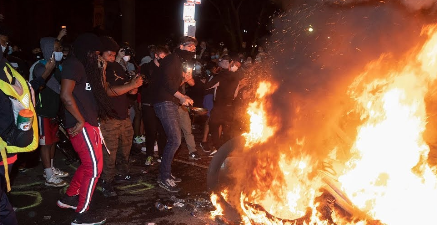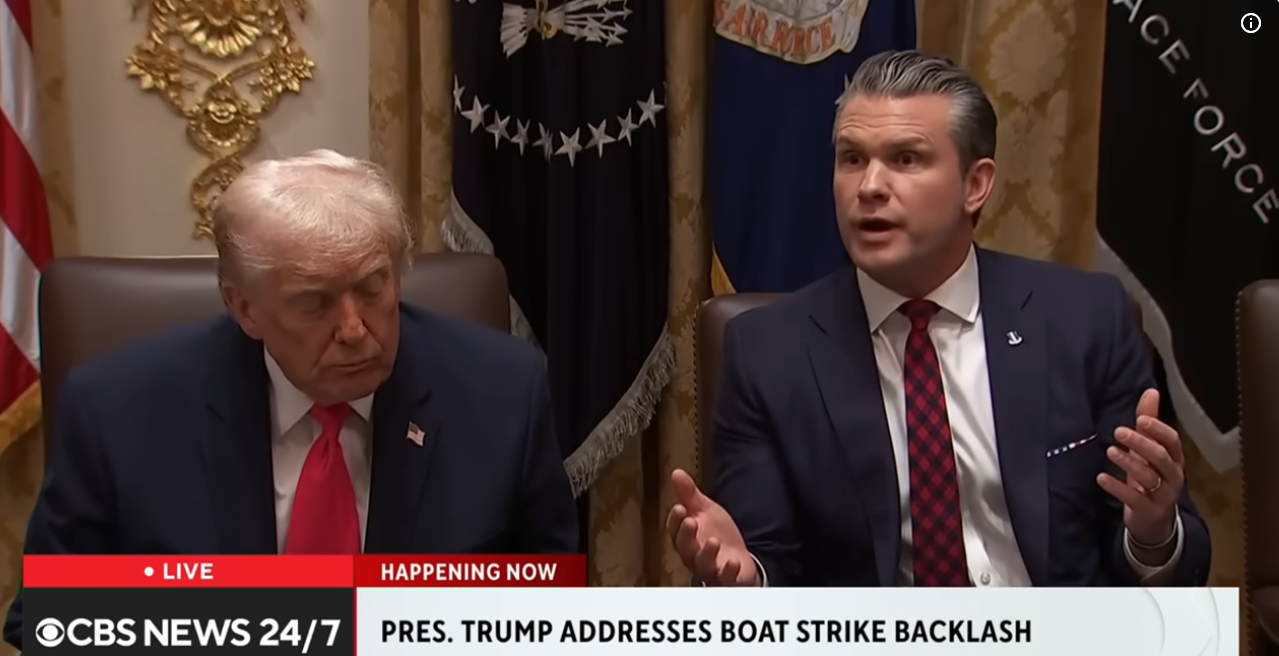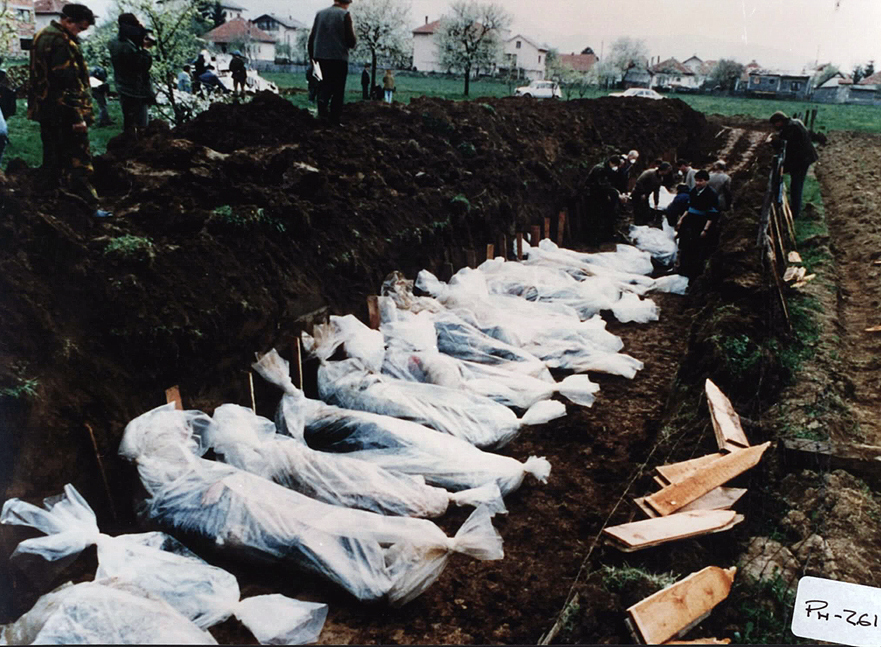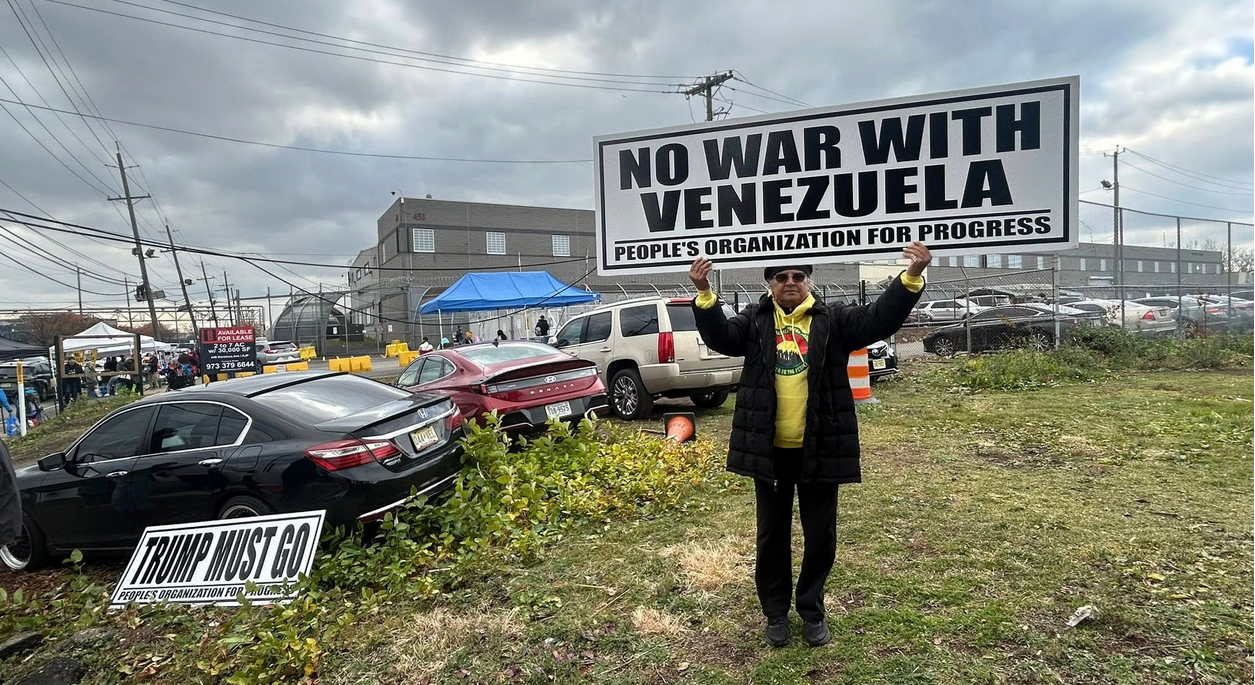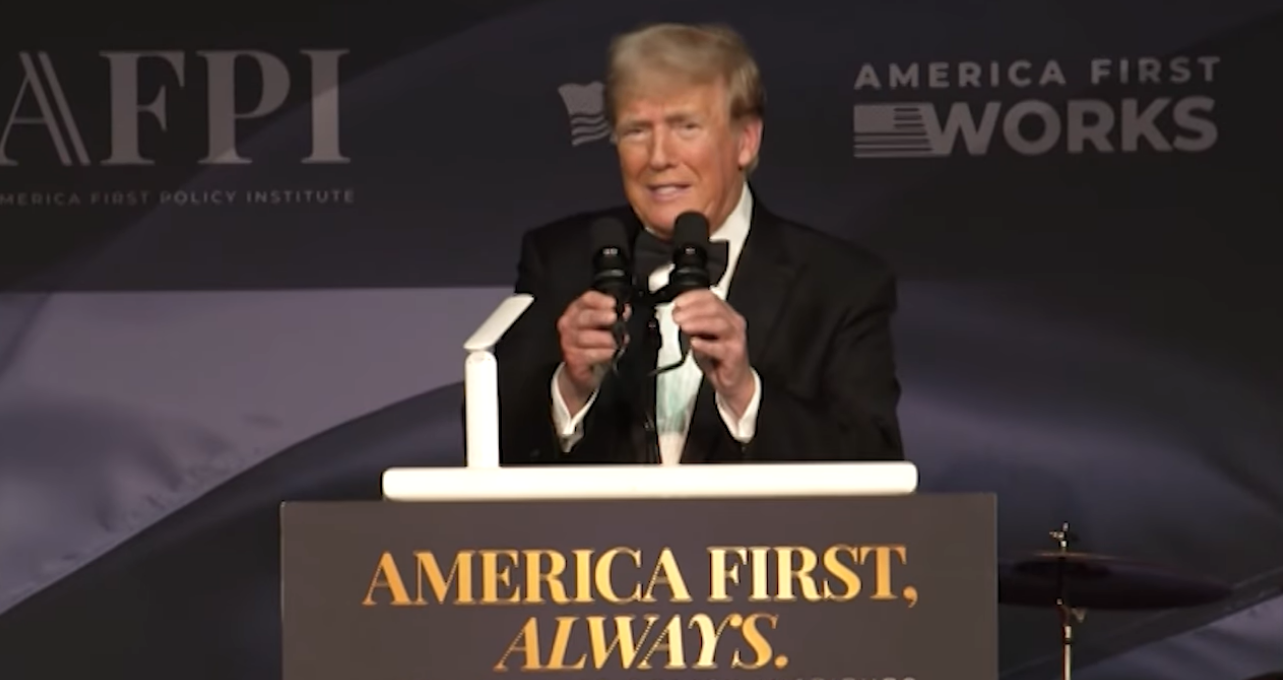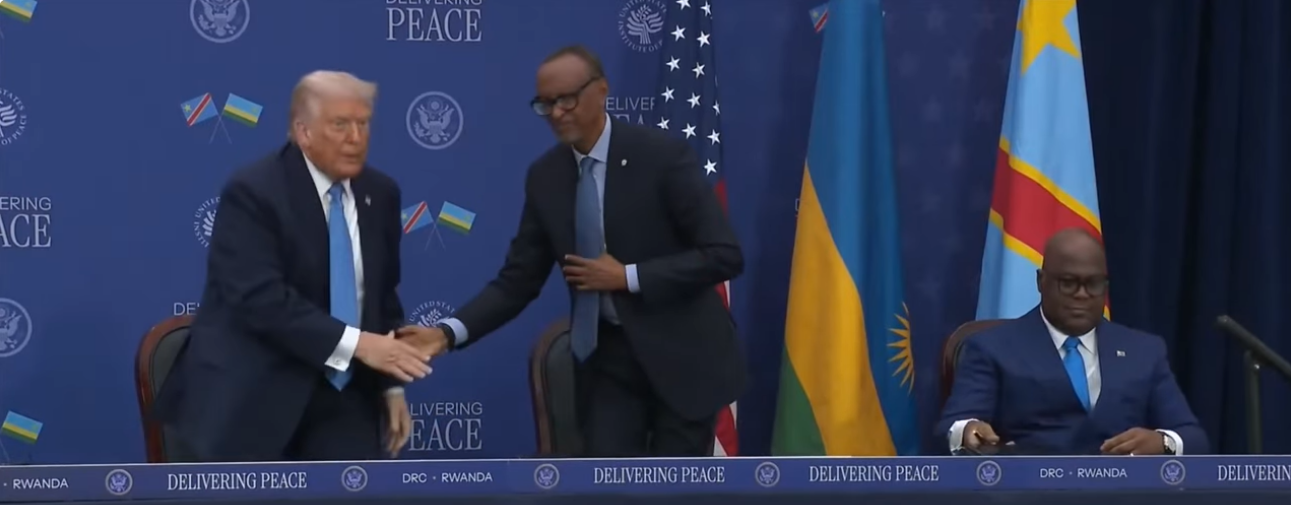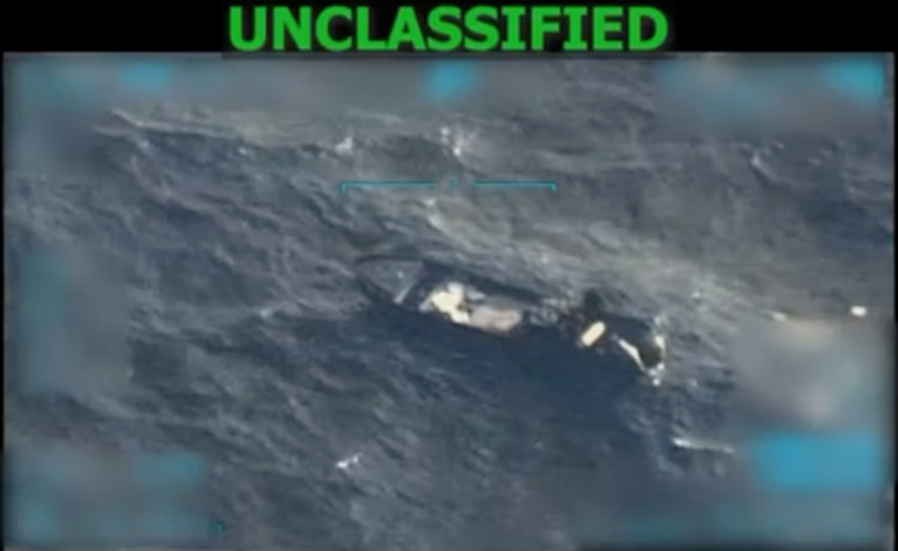[Trump Reelection\Protests]
Hastings: “Those who in the name of resisting police violence on Black people are breaking windows, committing arson, throwing or launching projectiles at police, shutting down freeways, and even occasionally looting, are helping Trump in battleground states.”
Photo: YouTube
Is Trump being help in battleground states by the broadcasting of periodic incidents of violence during some of the protests against racial police violence and murder?
Since the Memorial Day murder of George Floyd, a portion of America has been in uprising, righteously enraged at the seemingly endless incidents of police killing unarmed Black people.
Most of those who have protested have been nonviolent. Some have not.
Those who in the name of resisting police violence on Black people are breaking windows, committing arson, throwing or launching projectiles at police, shutting down freeways, and even occasionally looting, are helping Trump in battleground states.
Yes, that is exactly what is happening.
While initial public opinion was in favor of the protests and especially in favor of their announced goals, the nightly violence in some towns—such as mine—is affording Donald Trump easy ammunition toward his reëlection. Consider the trends.
As the protesters continue to mass up in the downtown business and government building area, police show up increasingly geared up and prepped up to do battle. They are portraying themselves increasingly successfully as the thin blue line that is the last bastion against violent anarchy. Police officials are giving detailed, reasonable-sounding briefings that depict agitators as closer to guerrilla than to well meaning citizens.
How can we infer that this means a shift in public opinion for Trump?
A 2018 Stanford study with a strong methodology tested and found for the idea that when the public views protesters being violent or raging with apparent hatred, whatever position the protesters promoted would lose favor with that observing public and the position of the authorities would be more acceptable. In other words, when folks see violent protests on TV, they shift in their attitudes away from the announced goal of the protesters.
Trump’s campaign counts on this and is taking advantage of it.
Of course, the more radical media in favor of the protesters will focus on the portions of the story that put the police in a bad light. This is certainly in line with what was seemingly envisioned in the First Amendment, that the press can be advocates. But in terms of the opinions of the general public, we have to ask how many of the average citizens are consuming such media?
In a blue state like Oregon, Trump’s actions to deploy unmarked, aggressive federal agents are going to be decried by many elected officials, including in this case both US senators and the governor.
But in states that Trump needs in November, his base is bolstered and enlarged when national media—especially Fox News—shows repeated, dramatic actuality of protesters burning police cars, shooting very large fireworks directly at cops, and smashing government and private property.
Trump points to Portland very explicitly and in his usual arrogant fashion, declares that he has fixed it and will do so again. “It’s easy,” he says, even as one nonviolent protester lies in the hospital, recovering from surgery after being struck in the head with a federal officer-fired “less lethal” concussive round.
Aside from assisting Trump by providing nightly shows of aggressive attacking militaristic protesters—some of whom may well be government agents provocateurs, if history is any guide—the more violent protesters give justification to police and federal armed agents to crackdown.
The other major effect of this sort of chaotic uprising is that the message of the protest is lost and the story becomes the clash between anarchic violent protesters and riot-geared police. Who cares about George Floyd when citizens turn on their TVs and see downtown in flames and boarded up? And when protesters are filmed lighting fires and launching glass bottles at police while chanting “George Floyd!” and “Kill the pigs!”, that is gold to the Trump campaign.
Is that really what protesters want? To help Trump get reëlected?
As someone who has done a fair bit of nonviolent civil resistance over the decades, and as someone who writes, researches, studies and teaches in this field, my recommendations:
· Armed law enforcement should stay away if at all possible. Develop unarmed official observers and negotiators who do not show up geared up and apparently looking for a fight.
· City, police, and state officials should denounce any activities done by any agents provocateurs and sign binding promises, ordinances, and pass state laws forbidding such unethical practices (this if very different from simple informants who do not infiltrate a campaign to destroy it but only to monitor it).
· Social movements should learn from and emulate historical campaigns that have successfully decided on, trained for, and succeeded with nonviolent commitment and discipline. In addition, campaign leadership should distance the campaign from any violent behavior.
· Media should clearly portray the true picture of any movement that is overwhelmingly composed of nonviolent protesters and a relatively small number of violent protesters. Further, if the campaign’s publicity and spokespeople consistently call for complete nonviolence, the media should make that clear to the public.
· Federal troops should be never be used in US cities. This is always a state or local matter. Always.
· Longer term: repeal the Second Amendment and disarm the agents of the state. The two are absolutely intertwined aspects of the same default problem.
Bring the issue back to the best policing possible and remove the politics by removing the violence. We as US citizens deserve nothing less.
Dr. Tom H. Hastings is Coördinator of Conflict Resolution BA/BS degree programs and certificates at Portland State University, PeaceVoice Director, and on occasion an expert witness for the defense of civil resisters in court.
